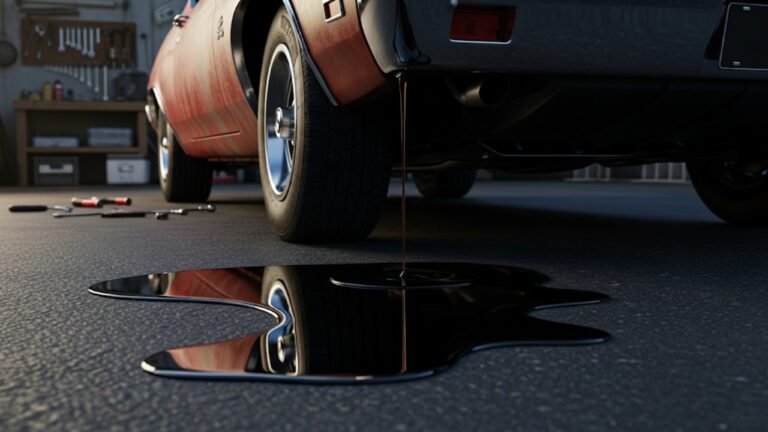The Truth About Car Oil 0W 20: Why Your Engine Loves It

A few years back, I was dealing with a car that sounded like it had aged 10 years overnight. The morning starts were rough, it growled on acceleration, and my fuel economy was dropping fast. I thought something serious was broken. But as it turned out, all it needed was the right engine oil. That’s when I stumbled upon car oil 0W 20.
At first, I didn’t understand the numbers and letters. I thought, “Oil is oil, right?” Nope. Not even close. Switching to 0W 20 motor oil turned out to be the smoothest decision I’ve ever made for my car. The ride became quieter. It responded better, even in chilly mornings. Most importantly, my fuel economy saw a nice boost. This oil has become a trusted friend, just like that old roadside mechanic who never overcharges you.
So, if you’ve ever scratched your head wondering what the heck 0W 20 oil does, or why it might matter more than you think—it’s time to unpack the story.
What Exactly Is Car Oil 0W 20? (And Why Should You Care?)
Okay, let’s break it down in simple terms. Car oil 0W 20 is a full synthetic motor oil designed to flow easily at low temperatures (that’s the “0W” part) and maintain stability at higher temperatures (the “20” part). But honestly, that barely scratches the surface.
Here’s a simple analogy. Imagine engine oil as your car’s bloodstream. Now imagine it gets really cold outside. Regular oil turns sluggish—like syrup in a freezer. But 0W 20 synthetic oil flows like warm tea on a cold morning. It reaches every crevice of your engine fast, keeping wear and tear at bay.
Let’s simplify the name:
| Part | What It Means |
|---|---|
| 0W | Winter rating – performs well in freezing temps |
| 20 | Viscosity at operating temperature – thinner for better flow |
| Synthetic | Engineered for optimal performance and durability |
The best part? It’s not just about performance—it’s about protection. Car oil 0W 20 coats your engine parts from the moment you turn the key, helping your car live longer with fewer repairs.
If you drive a modern Toyota, Honda, or Ford, chances are your car already recommends this oil. It’s not a gimmick—it’s what today’s high-efficiency engines are built around.
Why Thin Oil Isn’t Weak Oil: A Story About Winter Mornings and Cold Starts
I remember one frosty morning in Sylhet, when my cousin’s Corolla simply refused to start. The engine would crank and cough but just wouldn’t catch. We eventually jump-started it, but the issue was deeper. His car was running thick 10W 40 oil, totally unsuited for cold weather.
That’s when I shared what I had learned: car oil 0W 20 was built for situations just like this. It stays fluid even when the air feels like you could snap it in half. Thin doesn’t mean weak. In fact, thinner oil means faster flow, quicker protection, and smoother starts.
Modern engines are built with tight tolerances. They don’t need thick oil sloshing around. They need a smart, nimble oil that flows at the speed of thought. That’s why 0W 20 works wonders—it reaches every moving part in seconds, preventing metal-on-metal contact that leads to damage.
If you live in a region that sees winter chills—or if you do a lot of short trips where the engine barely warms up—0W 20 should be your go-to choice.
Fuel Economy Magic: How 0W 20 Oil Saves You Money at the Pump
Let’s be real—fuel prices aren’t getting any friendlier. That’s why the promise of better fuel economy is more than just a bonus; it’s a big reason many of us switched to car oil 0W 20 in the first place.
Here’s how it works: thick oil creates more drag inside the engine. Imagine trying to jog through waist-deep water versus a swimming pool filled with air. That’s how your engine feels when it’s pushing thick oil. 0W 20 oil lets it glide more freely, reducing internal resistance. Less resistance = less fuel burned.
According to the American Petroleum Institute (API) and OEM data, switching from 5W 30 to 0W 20 synthetic oil can improve your fuel efficiency by up to 2%. It doesn’t sound like a lot, but over the course of a year, that can mean extra miles for every taka you spend on fuel.
In a hybrid or small turbocharged engine, the gains are even more noticeable. It’s no wonder automakers like Toyota and Honda recommend car oil 0W 20 right out of the factory.
How Often Should You Change 0W 20 Oil? (The Answer May Surprise You)
Here’s something that blew my mind. With conventional oil, I was changing it every 3,000 to 4,000 miles. That meant more garage visits, more wasted weekends, and more money down the drain. But with full synthetic 0W 20, the interval jumped to 7,500 to 10,000 miles.
That’s because synthetic oil doesn’t break down as quickly. It resists heat, sludge, and contamination much better than conventional blends. So not only is your engine safer, your wallet is too.
Let me put this into perspective with some real-world numbers:
-
Conventional oil: Change every 3,000 miles
-
Synthetic blend: Change every 5,000 to 7,000 miles
-
0W 20 full synthetic: Change every 7,500 to 10,000 miles
I now change oil just twice a year, even with regular driving. That means less hassle and fewer costs—without compromising my engine’s health. Just make sure to check your owner’s manual, because different driving habits (like towing, dusty roads, or lots of short trips) may still call for more frequent changes.
0W 20 Oil vs Other Grades: What’s the Difference, Really?
When you see oil grades like 5W 30, 10W 40, or even 0W 16, it’s easy to get overwhelmed. I used to feel like I was deciphering a secret code. But it’s not that complicated once you understand what they do.
Here’s a quick breakdown comparing common types to car oil 0W 20:
| Oil Grade | Cold Start Performance | Fuel Economy | Engine Protection | Recommended For |
|---|---|---|---|---|
| 0W 20 | ⭐⭐⭐⭐⭐ | ⭐⭐⭐⭐⭐ | ⭐⭐⭐⭐ | Modern engines, hybrids, cold climates |
| 5W 30 | ⭐⭐⭐⭐ | ⭐⭐⭐ | ⭐⭐⭐⭐ | Older engines, mild climates |
| 10W 40 | ⭐⭐ | ⭐⭐ | ⭐⭐⭐⭐⭐ | High-mileage or heavy-duty engines |
| 0W 16 | ⭐⭐⭐⭐⭐ | ⭐⭐⭐⭐⭐ | ⭐⭐ | Ultra-efficient engines only |
So while car oil 0W 20 may not suit every engine, for most newer vehicles, especially those built after 2010, it hits the sweet spot between fuel efficiency, cold-weather flow, and durability.
If you use the wrong oil, your car might not show symptoms right away. But over time, the damage adds up—poorer performance, engine wear, and more emissions. It’s worth choosing wisely.
The Long-Term Love Story: How 0W 20 Oil Helps Your Engine Age Gracefully
You know how people say a good diet leads to a longer life? Well, car oil 0W 20 is the engine’s version of a heart-healthy lifestyle. Over time, the benefits stack up in quiet ways—less engine sludge, smoother rides, and fewer costly repairs. You might not see it overnight, but it’s definitely working.
I once owned a Honda Fit that clocked over 200,000 kilometers. Want to know the secret to its long life? Faithfully using 0W 20 synthetic oil every 8,000 km. No additives. No gimmicks. Just consistency. It never burned oil. Never made knocking noises. Never broke down unexpectedly. Even in Dhaka’s stop-go traffic, the car never lost its cool—literally and figuratively.
Car oil 0W 20 offers high-temperature stability, oxidation resistance, and low volatility, which means it doesn’t evaporate easily. That’s why it protects your engine’s delicate components, especially the valvetrain and turbochargers found in modern engines. In short? Less wear and tear, and more peace of mind.
Busting Myths: Common Misconceptions About Car Oil 0W 20
Let’s be honest—there’s a lot of confusion when it comes to engine oil. And car oil 0W 20 gets its fair share of criticism, mostly from outdated ideas. So let’s clear the air, myth-buster style.
Myth #1: “0W 20 is too thin to protect my engine.”
This is like saying water doesn’t hydrate you because it’s not thick. 0W 20 may feel thinner, but it’s engineered with advanced additives to reduce friction, handle heat, and protect metal surfaces under pressure. It’s not about thickness—it’s about performance.
Myth #2: “You can’t use 0W 20 in hot climates.”
Actually, you can. While it flows fast in cold weather, 0W 20 oil maintains stability at high temperatures too. That “20” rating means it performs well even in the scorching heat of Chattogram or the dry season in Rajshahi. It’s thermally stable up to 200°C (392°F).
Myth #3: “Only small engines need 0W 20.”
Not true. Many full-size SUVs, hybrids, and sedans now recommend this grade for fuel efficiency and lower emissions. It’s less about engine size, more about engineering precision.
The key? Always follow your car’s manufacturer’s recommendation. But if it calls for 0W 20, don’t doubt it. It’s not a downgrade—it’s an upgrade.
How to Choose the Best 0W 20 Oil Brand (Because Not All Are Equal)
Just like rice comes in basmati, miniket, or chinigura—not all 0W 20 oils are the same. Here’s what to look for when shopping:
Look for API & ILSAC certifications
These labels ensure the oil meets performance standards. You’ll usually see API SP or ILSAC GF-6 printed on the bottle.
Full synthetic only
Some brands try to pass off semi-synthetics as equals. Don’t fall for it. Go for full synthetic to get the true performance benefits.
Reputable brands
Some of the best and most trusted names include:
-
Mobil 1 Advanced Fuel Economy 0W-20
-
Castrol EDGE Advanced 0W-20
-
Valvoline Advanced Full Synthetic 0W-20
-
Toyota Genuine Motor Oil 0W-20
Check for OEM endorsements
If a bottle says “approved by Toyota, Honda, or GM,” that’s a green light. It means the manufacturer tested and approved it for real-world use.
A good bottle might cost more upfront—but it saves you thousands in engine repairs down the line. Think of it as insurance for your engine.
DIY Tips: How to Check and Change Your 0W 20 Oil Like a Pro
Checking and changing your own oil might seem intimidating, but with car oil 0W 20, it’s actually pretty simple. Let me walk you through it, as I did for my younger brother when he bought his first car.
What you’ll need:
-
4-5 liters of 0W 20 synthetic oil
-
A new oil filter
-
A wrench and drain pan
-
A pair of gloves and an old rag
Step-by-step:
-
Warm up the car for 2-3 minutes.
-
Lift the front (use ramps or a jack) and ensure safety.
-
Unscrew the oil drain bolt and let the oil flow into the pan.
-
Remove and replace the oil filter—be careful, it’s slippery.
-
Tighten everything back, then pour in your fresh car oil 0W 20.
-
Start the engine for a minute, then turn it off and check the dipstick.
Done. It’s therapeutic, cost-effective, and gives you total control over what goes into your engine.
Why You Should Choose Car Oil 0W 20
Let’s simplify everything with a quick summary. Here’s what makes 0W 20 oil a smart, safe, and strong choice for your engine:
-
Superior cold start performance
-
Improved fuel economy
-
Longer oil change intervals
-
Less wear and tear
-
Compatible with modern engines
-
Helps reduce carbon emissions
FAQs About Car Oil 0W 20
Here are answers to common questions drivers often ask:
Can I use 0W 20 oil if my manual says 5W 30?
Only if your manufacturer allows it. Check the manual. Some engines are versatile, others are not.
Is 0W 20 oil good for hot weather?
Yes. Despite its “0W” label, it handles high temperatures well due to its synthetic makeup.
How many kilometers can I go between changes?
Typically 10,000 km, but always follow your specific vehicle’s guidelines and consider your driving habits.
Does 0W 20 oil clean the engine?
Yes. Many full synthetic 0W 20 oils contain detergents that reduce sludge and keep your engine clean.
Can I switch from 5W 30 to 0W 20?
Yes, if your engine is compatible. Many newer cars are optimized for thinner oils like car oil 0W 20.
Will using 0W 20 void my warranty?
Not if it matches your OEM specification. In fact, using the wrong oil is more likely to cause issues.
Is it okay to mix 0W 20 with other oils?
It’s best to avoid mixing, but if you’re in a bind, make sure the other oil is also synthetic and the same viscosity.
Conclusion: Car Oil 0W 20 Is More Than Just Oil—It’s Engine Wellness in a Bottle
Choosing the right oil isn’t just about ticking a box during maintenance. It’s about respecting your engine, prolonging its life, and enjoying every smooth, quiet ride. From cold morning starts to highway sprints, car oil 0W 20 delivers performance that you can feel, hear, and even save money from.
I’ve trusted it in my daily driver, recommended it to friends and family, and watched it keep cars running like new even after years of use. It’s not hype—it’s science, wrapped in real-life results.
So, if you’re still debating what oil to pour into your next oil change, stop overthinking. Car oil 0W 20 isn’t just the right choice—it’s the smart one.






